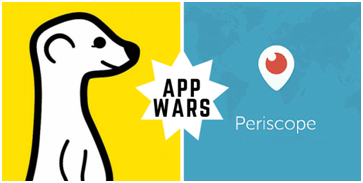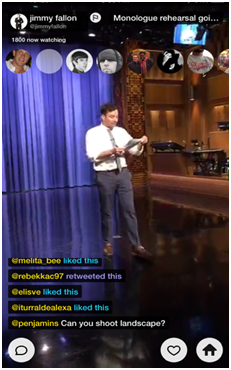 March 26, 2015: It’s been a huge two weeks for live streaming. The first step was the launch and success of Meerkat, an app that fed on Twitter’s user base. A champion at the SXSW conference, Meerkat went viral and had over 120,000 signups. Media outlets, tech fans, “social media ninjas”, and marketers all commented on the new app and its projected future. A few interviews and celebrity sign-ups later, and it was looking like Meerkat was going to be huge.
March 26, 2015: It’s been a huge two weeks for live streaming. The first step was the launch and success of Meerkat, an app that fed on Twitter’s user base. A champion at the SXSW conference, Meerkat went viral and had over 120,000 signups. Media outlets, tech fans, “social media ninjas”, and marketers all commented on the new app and its projected future. A few interviews and celebrity sign-ups later, and it was looking like Meerkat was going to be huge.
Then, in a power move, Twitter cut off Meerkat’s access to its “social graph.” This made it harder to build communities and followers on Meerkat. A few updates were introduced that allowed web following, but it didn’t mend the initial snub by Twitter. Some social media watchers claimed that this happened because Twitter was working on its own live-streaming service, Periscope, which would be a direct Meerkat competitor. Either way, Meerkat continued to  climb, with 30% growth after the crackdown, announcements of future updates, and hints at huge investments.
climb, with 30% growth after the crackdown, announcements of future updates, and hints at huge investments.
Okay, now’s the time to grab the popcorn.
This morning, Twitter’s Periscope app hit the Apple store. To put it gently, the app has many things that Meerkat only“hints” at having in the future. For starters, the app is way prettier to look at. Meerkat’s extreme yellow and white logo kept getting confused for Snapchat on my phone, and the internal stream was fairly hideous. I know I can’t expect design perfection from an app that was built in 8 weeks, but if you’re going to complete with big networks like Twitter, looks are going to come into play. Plus, Periscope’s little encouraging hearts that come up in the corner when users tap the screen (almost like clapping) is a cute idea.

Periscope also offers to broadcast streams even after they are finished, unlike Meerkat, which encourages total FOMO among of us that are busy during the day and would rather catch up on social media later. This feature is the one that Meerkat will have to scramble to compete with the most.
Meerkat does have a few aspects that I prefer, however. It’s easier on Meerkat to find broadcasts that interest me, or that at least have larger viewer counts. Of course, the user base is just beginning to grow on Periscope so that could be a “first day jitters” glitch. Meerkat’s “leader board” allowed you to find the most active and liked broadcasters. Periscope’s actual stream lacks “like” and “share” buttons, which Meerkat utilizes to allow users to share their Meerkat activity on Twitter. Meerkat’s comments that overlay on the stream are also better, where it seems like Periscope’s disappear almost immediately.
Periscope opted for the hearts thing, which I mentioned as “cute” but doesn’t seem very efficient as far as encouraging conversation. It seems that Twitter is choosing to keep Periscope activity within Periscope, as opposed to syncing activity with Twitter’s feed.
My last issue with Periscope is the amount of notifications it’s pushing to my phone. Tweets about Meerkat streams on Twitter from people I followed seemed way less “in your face” than Periscope’s blips about live broadcasts.
All of this considered, Periscope is not going to kill Meerkat (at least not right away). A lot of the takeaways are from an initial first impression, which can mean close to nothing when it comes to tech (Ello, anyone?). It’s going to be an interesting ride for Meerkat, similar to other “startup” apps (Instagram, Snapchat, Vine) that competed with the giants but still met success. Competitions in tech have only led to bigger, better, and more amazing developments. I’m definitely looking forward to the results!
- 10 Mistakes to Avoid When Using QR Codes for Marketing - September 20, 2023
- Kevin Lee on How AI Changes the SEO Landscape - August 31, 2023
- The Power of Compound Marketing: Kevin Lee Presents @ 1MediaWorld 2023 Global Conference - March 7, 2023

